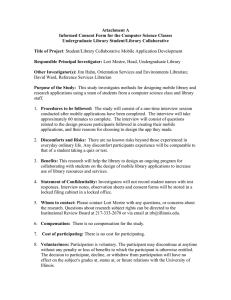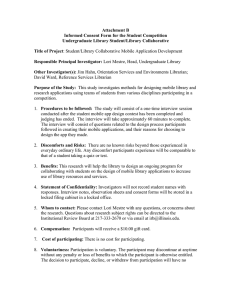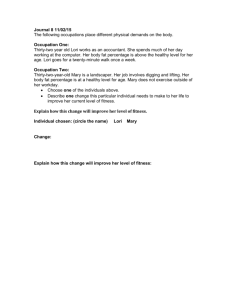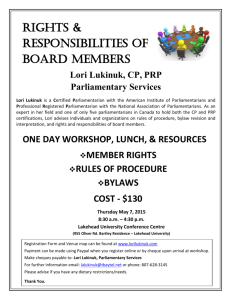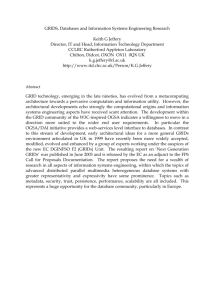Meeting Summary – September 8, 2010
advertisement
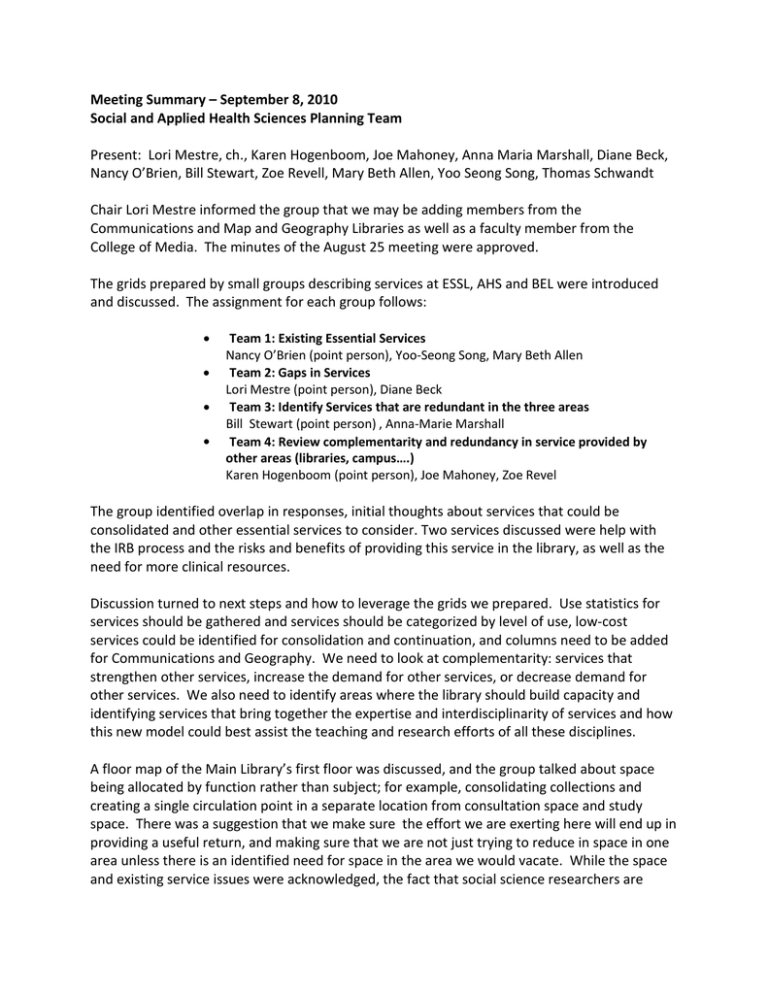
Meeting Summary – September 8, 2010 Social and Applied Health Sciences Planning Team Present: Lori Mestre, ch., Karen Hogenboom, Joe Mahoney, Anna Maria Marshall, Diane Beck, Nancy O’Brien, Bill Stewart, Zoe Revell, Mary Beth Allen, Yoo Seong Song, Thomas Schwandt Chair Lori Mestre informed the group that we may be adding members from the Communications and Map and Geography Libraries as well as a faculty member from the College of Media. The minutes of the August 25 meeting were approved. The grids prepared by small groups describing services at ESSL, AHS and BEL were introduced and discussed. The assignment for each group follows: • • • • Team 1: Existing Essential Services Nancy O’Brien (point person), Yoo-Seong Song, Mary Beth Allen Team 2: Gaps in Services Lori Mestre (point person), Diane Beck Team 3: Identify Services that are redundant in the three areas Bill Stewart (point person) , Anna-Marie Marshall Team 4: Review complementarity and redundancy in service provided by other areas (libraries, campus….) Karen Hogenboom (point person), Joe Mahoney, Zoe Revel The group identified overlap in responses, initial thoughts about services that could be consolidated and other essential services to consider. Two services discussed were help with the IRB process and the risks and benefits of providing this service in the library, as well as the need for more clinical resources. Discussion turned to next steps and how to leverage the grids we prepared. Use statistics for services should be gathered and services should be categorized by level of use, low-cost services could be identified for consolidation and continuation, and columns need to be added for Communications and Geography. We need to look at complementarity: services that strengthen other services, increase the demand for other services, or decrease demand for other services. We also need to identify areas where the library should build capacity and identifying services that bring together the expertise and interdisciplinarity of services and how this new model could best assist the teaching and research efforts of all these disciplines. A floor map of the Main Library’s first floor was discussed, and the group talked about space being allocated by function rather than subject; for example, consolidating collections and creating a single circulation point in a separate location from consultation space and study space. There was a suggestion that we make sure the effort we are exerting here will end up in providing a useful return, and making sure that we are not just trying to reduce in space in one area unless there is an identified need for space in the area we would vacate. While the space and existing service issues were acknowledged, the fact that social science researchers are engaged in problem-based inquiry that cuts across disciplinary boundaries was presented as an issue that should be addressed in our new service model. This model has the potential to bring together in one place the interdisciplinary expertise of all the areas. Lori offered to do a first pass at consolidating the four service grids and preparing a summary of the recommendations based on the grids, along with next steps and further exploration needed. She will also prepare a first draft of the strategic profiles of each of the existing libraries, based on the annual reports and other information that group members provided. She will ask JoAnn Jacoby for demographic reports from DMI about the departments served by each library under discussion. She will share the draft with the group before the next meeting. (Submitted by Karen Hogenboom)
